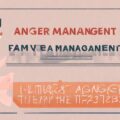Understanding Anger in Children
Anger is a natural emotion that everyone experiences, including children. However, many kids struggle to manage their anger in healthy ways. As parents and caregivers, we can help children develop important emotional regulation skills through fun and engaging anger management activities. These activities not only teach kids to cope with anger, but also foster emotional intelligence, self-awareness, and compassion.
The Importance of Teaching Anger Management Skills
Learning to manage anger is a crucial life skill. When children can effectively handle their anger, they are better equipped to:
- Build positive relationships
- Resolve conflicts peacefully
- Improve communication skills
- Boost self-esteem
- Reduce stress and anxiety
By introducing anger management activities early on, we set children up for emotional success throughout their lives.
10 Fun Anger Management Activities for Kids
1. Calm Down Jars
Create a “calm down jar” by filling a clear plastic bottle with water, glitter, and food coloring. When a child feels angry, they can shake the jar and watch the glitter settle, helping them visualize calming down.
2. Anger Thermometer
Draw a large thermometer and help kids identify their anger levels from 1-10. This visual aid helps children recognize when their anger is escalating and prompts them to use coping strategies.
3. Breathing Buddies
Have children lie down with a stuffed animal on their belly. As they breathe deeply, they watch their “breathing buddy” rise and fall, promoting relaxation and mindfulness.
4. Emotion Charades
Play a game of charades focused on emotions. This fun activity helps kids recognize and express different feelings, including anger, in a safe and playful environment.
5. Anger Obstacle Course
Set up a simple obstacle course with stations for different coping strategies (e.g., deep breathing, counting to 10, stretching). Kids can run through the course when they feel angry, practicing various calming techniques.
6. Feelings Art
Provide art supplies and encourage children to draw or paint their anger. This creative outlet allows kids to express their emotions visually and can lead to meaningful discussions about feelings.
7. Anger Bubble Pop
Blow bubbles and let kids pop them while imagining their angry thoughts disappearing. This activity combines physical movement with visualization for effective anger release.
8. Mood Music
Create a playlist of calming songs. When children feel angry, they can listen to the music and focus on the soothing melodies to help regulate their emotions.
9. Kindness Rocks
Paint positive messages on rocks and place them around your neighborhood. This activity shifts focus from anger to kindness and helps children develop empathy.
10. Anger Superhero
Help kids create their own “Anger Superhero” character with special powers to defeat anger. This imaginative exercise empowers children to face their anger creatively.
Implementing Anger Management Activities at Home
To make these activities most effective:
- Practice regularly, not just during angry moments
- Participate alongside your child to model healthy anger management
- Praise efforts to manage anger, no matter how small
- Create a calm, safe space for anger expression
- Be patient and consistent in your approach
Remember, learning to manage anger is a process. Celebrate progress and continue to support your child’s emotional growth with compassion and understanding.
The Role of Empathy in Anger Management
As we guide children through anger management, it’s crucial to approach the process with empathy. Understanding the root causes of a child’s anger can help us respond more effectively. Some ways to cultivate empathy include:
- Actively listening to your child’s feelings without judgment
- Validating their emotions, even if you disagree with their behavior
- Sharing your own experiences with anger and how you’ve learned to cope
- Encouraging open communication about all emotions, not just anger
By fostering an empathetic environment, we create a safe space for children to explore and manage their anger constructively.
FAQ: Anger Management for Kids
Q1: At what age should I start teaching anger management skills?
A1: It’s never too early to start. Even toddlers can begin learning simple emotional regulation techniques. As children grow, you can introduce more complex strategies tailored to their developmental stage.
Q2: How can I tell if my child needs professional help with anger management?
A2: If your child’s anger is frequent, intense, or leads to harmful behaviors, it may be time to seek professional help. Other signs include difficulty in school or social relationships due to anger issues.
Q3: Can these activities help children with special needs?
A3: Yes, many of these activities can be adapted for children with special needs. However, it’s best to consult with your child’s healthcare provider or therapist for personalized strategies.
Q4: How long does it take to see improvements in anger management?
A4: Every child is different, but with consistent practice, you may start to see improvements within a few weeks. Remember, managing anger is an ongoing process that continues throughout life.
Q5: What should I do if my child refuses to participate in these activities?
A5: Don’t force participation. Instead, model the activities yourself and make them a fun part of family routines. Over time, your child may become more interested in joining in.
By incorporating these fun and engaging anger management activities into your child’s life, you’re providing them with valuable tools for emotional regulation. Remember to approach this journey with patience, love, and understanding. Every step towards better anger management is a step towards a happier, more balanced life for your child.









